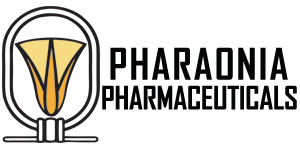Description
THERAPEUTIC INDICATIONS
Quifluro is indicated for the topical treatment of external ocular infections (such as conjunctivitis and keratoconjunctivitis) in adults and children caused by ofloxacin – sensitive organisms. Safety and efficacy in the treatment of ophthalmia neonatorum has not been established.
POSOLOGY AND METHOD OF ADMINISTRATION: Topical ocular instillation. For all ages: one to two drops in the affected eye(s) every two to four hours for the first two days and then four times daily. The length of treatment should not exceed ten days.
CONTRAINDICATIONS:
Quifluro is contra-indicated in individuals who have shown hypersensitivity to ofloxacin or any of its excipients.
SPECIAL WARNINGS AND PRECAUTIONS FOR USE: – Quifluro is not for injection. -Serious and occasionally fatal hypersensitivity (anaphylactic/anaphylactoid) reactions, some following the first dose, have been reported in patients receiving systemic quinolones, including ofloxacin. Some reactions were accompanied by cardiovascular collapse, loss of consciousness, angioedema (including laryngeal, pharyngeal or facial edema), airway obstruction, dyspnea, urticaria, and itching. -If an allergic reaction to ofloxacin occurs, discontinue the drug. Use Quifluro with caution in patients who have exhibited sensitivities to other quinolones antibacterial agents. -When using Quifluro eye drops the risk of rhinopharyngeal passage which can contribute to the occurrence and the diffusion of bacterial resistance should be considered. As with other anti-infectives, prolonged use may result in overgrowth of non-susceptible organisms. -If worsening infection occurs, or if clinical improvement is not noted within a reasonable period, discontinue use and institute alternative therapy. -Stevens-Johnson syndrome has been reported in patients receiving topical ophthalmic ofloxacin; however, a causal relationship has not been established. -Data are very limited to establish efficacy and safety of ofloxacin eye drops 0.3% in the treatment of conjunctivitis in neonates. -The use of ofloxacin eye drops in neonates with ophthalmia neonatorum caused by Neisseria gonorrhoeae or Chlamydia trachomatis is not recommended as it has not been evaluated in such patients. Neonates with ophthalmia neonatorum should receive appropriate treatment for their condition, e.g. systemic treatment in cases caused by Chlamydia trachomatis or Neisseria gonorrhoeae. -Use in elderly: No comparative data are available with topical dosing in elderly versus other age groups. -It is necessary to advise caution regarding the risk of corneal perforation when using product to treat patients with corneal epithelial defects or corneal ulcers. -Corneal precipitates have been reported during treatment with topical ophthalmic ofloxacin. However, a causal relationship has not been established. – Quifluro contains the preservative benzalkonium chloride which may cause ocular irritation and discolour soft contact lenses. -Use of contact lenses is not recommended in patients receiving treatment for an eye infection.
PREGNANCY AND LACTATION: -Use in pregnancy: It is recommended that Quifluro not be used in pregnant women. -Use during lactation: A decision should be made whether to temporarily discontinue nursing or not to administer the drug, taking into account the importance of the drug to the mother.
EFFECTS ON ABILITY TO DRIVE AND USE MACHINES: -No studies on the effects on the ability to drive and use machines have been performed. -Transient blurring of vision may occur on instillation of eye drops. Do not drive or operate hazardous machinery unless vision is clear.
UNDESIRABLE EFFECTS: General -Serious reactions after use of systemic ofloxacin are rare and most symptoms are reversible. Since a small amount of ofloxacin is systemically absorbed after topical administration, side-effects reported with systemic use could possibly occur. Immune System Disorders: Not known: Hypersensitivity (including Eye allergy) Nervous System Disorders Not known: Dizziness Eye Disorders Common: Eye irritation; Ocular discomfort Not known: Keratitis; Conjunctivitis; Vision blurred; Photophobia; Eye oedema; Foreign body sensation in eyes; Lacrimation increased; Dry eye; Eye pain; Eye pruritus; Eyelids pruritus; Ocular hyperaemia Gastrointestinal Disorders Not known: Nausea Skin and Subcutaneous Tissue Disorders Not Known: Periorbital oedema General Disorders and Administration Site Conditions Not known: Facial oedema
OVERDOSE: -No case of overdose has been reported. -In the event of a topical overdosage, flush the eye with water.
PHARMACOLOGICAL PROPERTIES: Pharmacodynamic properties: -Pharmacotherapeutic group: Ophthalmologicals, anti-infectives, quinolones -Ofloxacin is a synthetic fluorinated 4-quinolone antibacterial agent with activity against a broad spectrum of Gram negative and to a lesser degree Gram positive organisms. -Ofloxacin has been shown to be active against most strains of the following organisms both in vitro and clinically in ophthalmic infections. -Gram-negative bacteria: Acinetobacter calcoaceticus var. anitratum, and A. calcoaceticus var. iwoffi; Enterobacter Sp. including E. cloacae; Haemophilis Sp, including H. influenza and H. aegyptius; Klebsiella Sp., including K. Pneumoniae; Moraxella Sp., Morganella morganii; Proteus Sp., including P. Mirabilis; Pseudomonas Sp.; including P. Aeruginosa, P. cepacia, and P. fluoroscens; and Serratia Sp., including S. marcescens. -Gram-positive bacteria: Bacillus Sp.; Corynebacterium Sp.; Micrococcus Sp.; Staphylococcus Sp., including S. aureus and S. epidermidis; Streptococcus Sp., including S. Pneumoniae (see above), S. viridans and Beta-haemolytic. -The primary mechanisms of action is through inhibition of bacterial DNA gyrase, the enzyme responsible for maintaining the structure of DNA. -Ofloxacin is not subject to degradation by beta-lactamase enzymes nor is it modified by enzymes such as aminoglycoside adenylases or phosphorylases, or chloramphenicol acetyltransferase.
Pharmacokinetic properties: -After ophthalmic instillation, ofloxacin is well maintained in the tear-film.
PACKAGE:
A carton box containing a plastic dropper of 5 ml with a pamphlet
STORAGE:
Keep at temperature not exceeding 30C.
Keep after opening for 4 weeks at temperature not exceeding 30C.
Keep out of reach of children.







Reviews
There are no reviews yet.